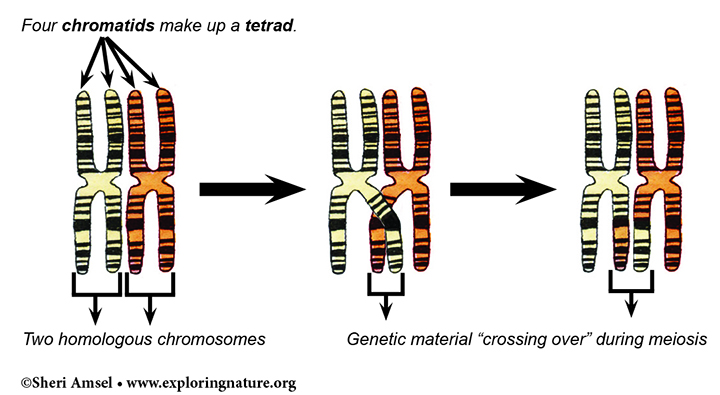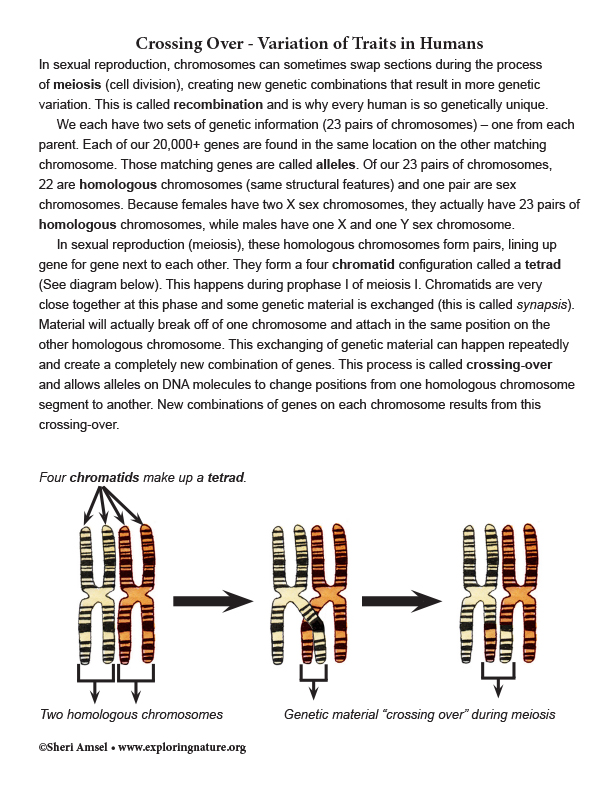

In sexual reproduction, chromosomes can sometimes swap sections during the process of meiosis (cell division), creating new genetic combinations that result in more genetic variation. This is called recombination and is why every human is so genetically unique.
We each have two sets of genetic information (23 pairs of chromosomes) – one from each parent. Each of our 20,000+ genes are found in the same location on the other matching chromosome. Those matching genes are called alleles. Of our 23 pairs of chromosomes, 22 are homologous chromosomes (same structural features) and one pair are sex chromosomes. Because females have two X sex chromosomes, they actually have 23 pairs of homologous chromosomes, while males have one X and one Y sex chromosome.
In sexual reproduction (meiosis), these homologous chromosomes form pairs, lining up gene for gene next to each other. They form a four chromatid configuration called a tetrad (See diagram below). This happens during prophase I of meiosis I. Chromatids are very close together at this phase and some genetic material is exchanged (this is called synapsis). Material will actually break off of one chromosome and attach in the same position on the other homologous chromosome. This exchanging of genetic material can happen repeatedly and create a completely new combination of genes. This process is called crossing-over and allows alleles on DNA molecules to change positions from one homologous chromosome segment to another. New combinations of genes on each chromosome results from this crossing-over.

